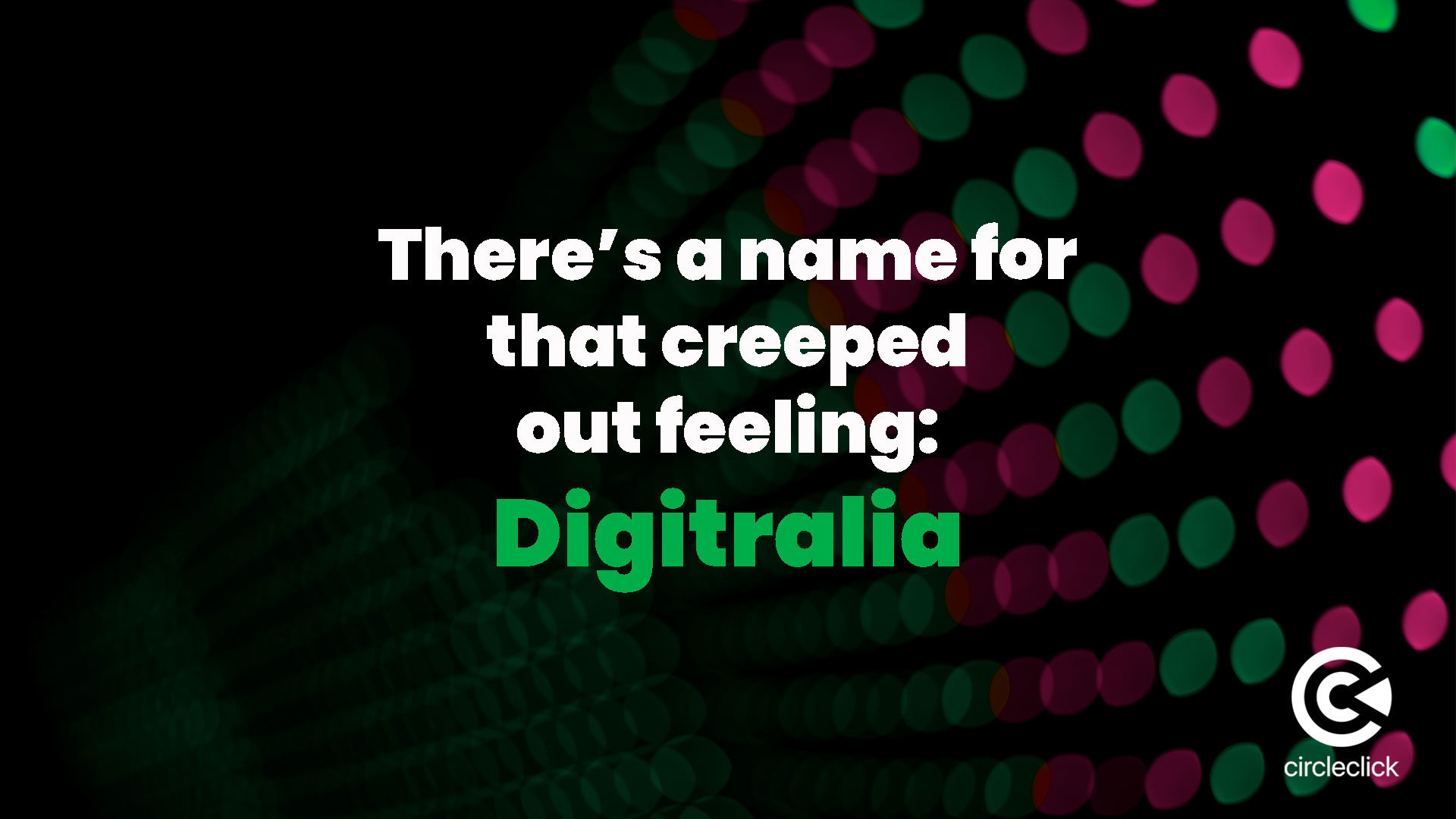There’s a name for that creeped out feeling: Digitrailia

It happens all the time. You’re at lunch with your friend chatting about the yummy meals they’ve been making with their new enamel dutch oven. You go on with your day, the conversation long forgotten, until that evening when you’re scrolling through social media, and there it is. An advertisement for the enamel dutch oven your friend was telling you about.
You hadn’t searched for it before or after your lunchtime conversation, yet somehow that enamel dutch oven has followed you. And it’s creepy, to say the least. If this has happened to you, know that you’re not alone.
Most of us have experienced this unsettling feeling when our innermost thoughts or recent conversations come back to us in the form of ads on social media or other websites and apps, but until now, we didn’t have a word for it.
How about this — digitralia.
A portmanteau of the words digital and penetralia, digitralia is a noun meaning: the innermost parts of a building; a secret or hidden place. (Plus, there’s a built-in pun.)
Our CEO, Anne Ahola Ward, coined this term after experiencing it for some time. She explained a specific instance where she discussed a new brand of makeup that she received for Christmas with her mother on WhatsApp. And having never searched for it or any other makeup online within the last 3 months or more, that very same makeup was advertised to her.
“I feel like it’s the uncanny valley equivalent of targeted advertisement”, says Ahola Ward.
But is your phone really eavesdropping on your conversations to serve you targeted advertisements? Google and Facebook have both denied the frequent assumption that their apps intercept our conversations to collect information and run targeted advertisements.
Explanations for this phenomena exist, and perhaps the most likely is coincidence. Most of us see targeted advertisements daily, some we are interested in or familiar with, and others we aren’t. Sometimes those targeted advertisements will coincide with our most recent conversations and thoughts, and it’s pure happenstance.
Another possible explanation is the Baader-Meinhof phenomenon, also known as the frequency illusion. Hear me out. Have you ever bought a new-to-you automobile and all of a sudden you see the same make and model everywhere when you hadn’t noticed it before? The idea is that an “awakening” occurs and the thing you just found out about suddenly seems to crop up everywhere. So maybe you’ve been getting the advertisements all along, but only noticed them after your conversation. This phenomenon contributes to digitralia!
Another strong explanation is that the targeted advertisements aren’t a coincidence at all, but simply a case of linked profiles across various synched devices. Even our phones talk to each other, especially if GPS or voice assistants are activated. Although it might seem clear that your conversation about enamel dutch ovens led to advertisements for the same product, it could have more to do with your browsing habits or the apps you’ve opened. Maybe you’ve been looking at recipes that feature dutch ovens, or you opened your Target app and looked at their sale on kitchen gadgets. These behaviors and interests, along with other demographics, are commonly used by advertisers to show users ads they will be the most interested in.
But no matter the cause of those featured products trailing you around following private conversations and musings, you’re not crazy, you are simply experiencing digitralia.


